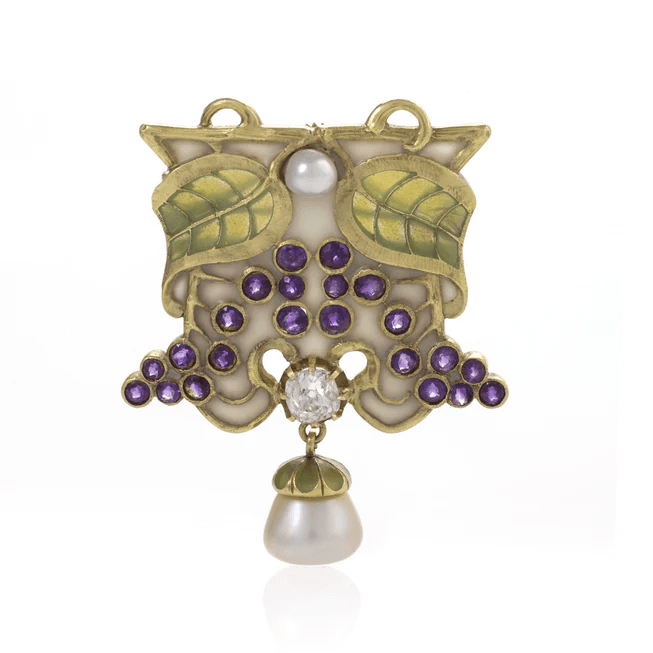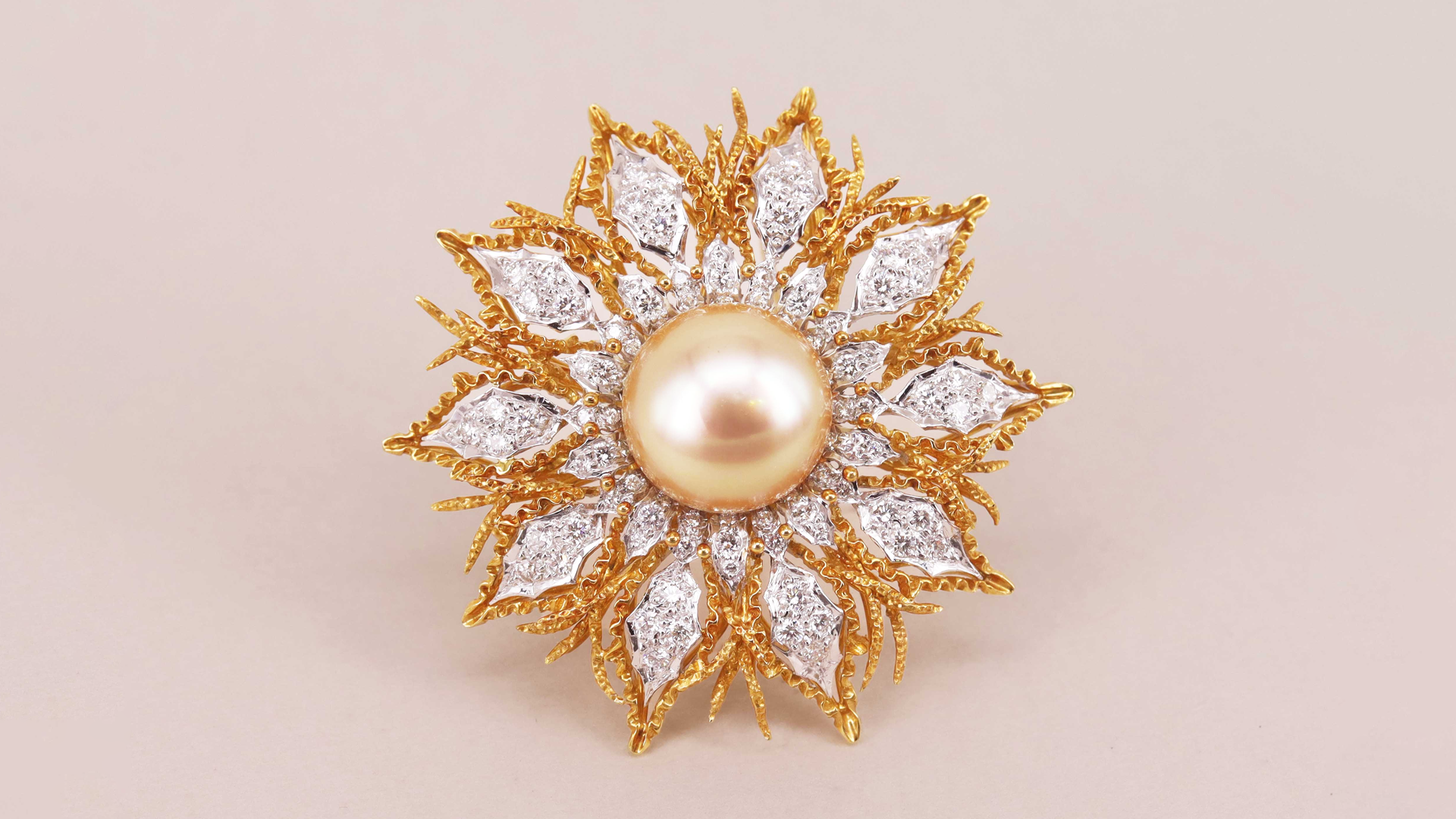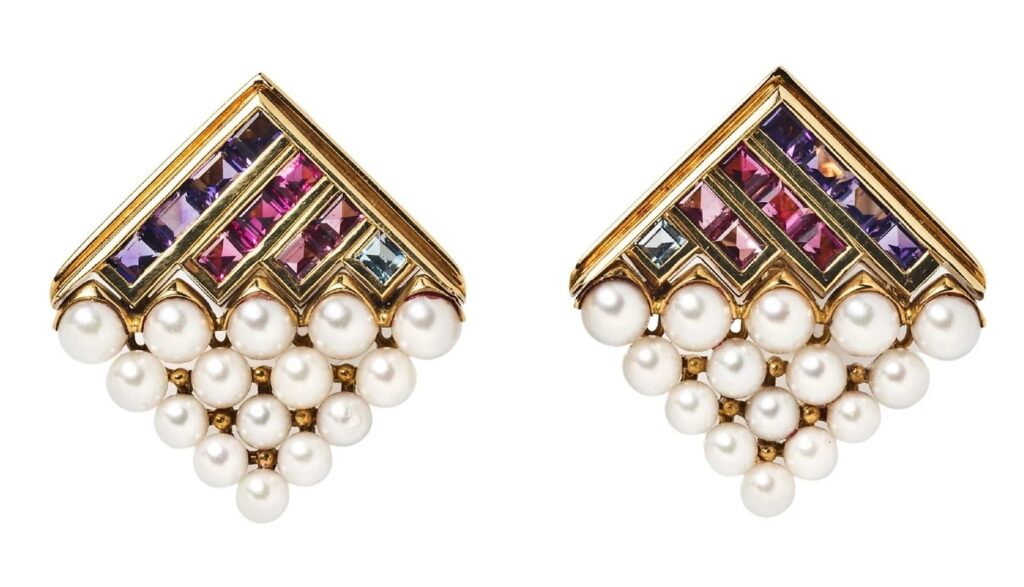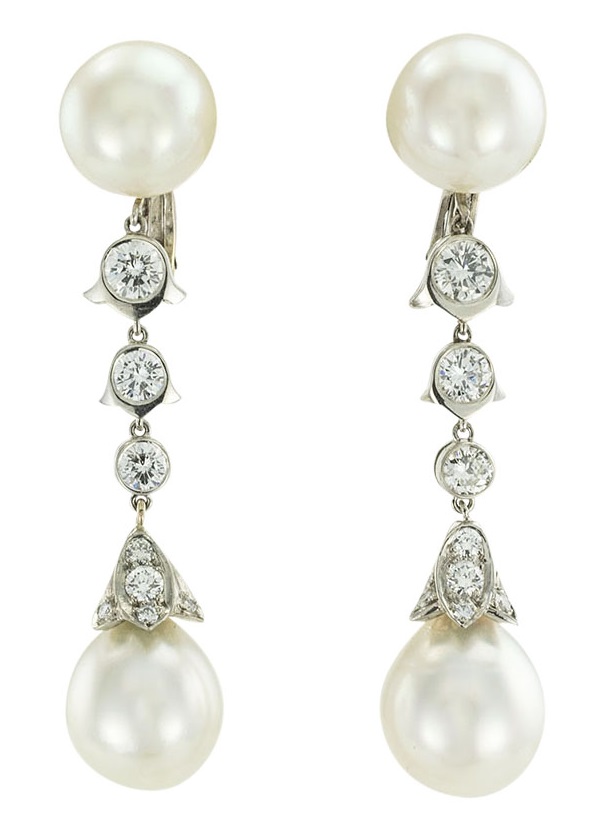Pearls are one of the most intriguing of all gems. Desired equally for their beauty and rarity, natural pearls were once reserved for royalty. In the 1920s cultured pearls were coming on to the market, making them readily available to more people at an accessible price point. Today, cultured pearls come in a wide range of types from those that grow in saltwater to those that grow in freshwater. The water in which the pearls are raised makes a big difference in the end result.
Saltwater Pearls
As the name implies, saltwater pearls are cultivated in saltwater, or more accurately the ocean. Saltwater pearls grow in oysters located in coastal areas and they tend to be higher quality than their freshwater counterparts. These pearls are nucleated by skilled technicians with a round bead, which helps the pearl to form in that shape as the oyster secretes nacre around the bead to soothe the irritation from the intruder. Layer upon layer of nacre eventually forms a pearl. In addition, saltwater pearls tend to be in the water longer than freshwater pearls, which allows them to grow bigger. Saltwater pearls are also more lustrous due to the length of time they spend in the water. The glossy luster found on saltwater pearls is one of the characteristics that makes them higher quality and much pricier than freshwater pearls. The cold saltwater slows down the metabolism of the oyster allowing for denser nacre to grow, which accounts for the luster. There are a few types of saltwater pearls, let’s take a look at what they are.
Akoya Cultured Pearls — These are the round, white or cream color pearls that we always think of when the subject of pearls comes up. These pearls are mostly from Japan, but are also cultivated in other places such as the Mississippi River. They form in the Pinctada Fucata oyster, also known as an Akoya oyster, which is a small oyster. Akoya pearls are known for their round shape and tend to be smaller than other saltwater pearls. These pearls typically spend 12 to 18 months in the water growing. Mikimoto is a famous producer of Akoya pearls.
South Sea Cultured Pearls — These pearls are large and can be either white or golden in color. South Sea pearls come from waters around Australia, Indonesia and the Philippines. They form in the Pinctada Maxima oyster, also called a white lipped oyster. These oysters are quite large and the pearls that they form are also among the larger pearls that can be found. South Sea pearls are generally in the water for two to three years.
Tahitian Cultured Pearls — These pearls are also very large and are black or gray and occasionally brown in color. They tend to have an overtone color of pink, purple, blue or green. Tahitian pearls grow in lagoons around French Polynesia, which includes the island of Tahiti. They form in the Pinctada Margaritifera oyster, also called a black lipped oyster, for around two years.
Freshwater Pearls
Freshwater pearls are cultivated in rivers, lakes and even ponds. Freshwater pearls grow in a type of mussel called Hyriopsis Cumingii, or freshwater mussel, they also grow in Hyriopsis Schlegelii and Cristaria Plicata mussels.

China is the largest producer of freshwater pearls, which are also grown in Japan and the Mississippi basin in the United States. Before China took over the freshwater pearl market, Japan produced an abundance of these pearls in Lake Biwa, near Kyoto. Pearl production at Lake Biwa peaked in the 1980s and over the years the supply dwindled due to pollutants in the water. That’s when China stepped in and became the leader in freshwater pearl production.
Each freshwater mussel can produce numerous pearls, up to 50 per mussel, providing an abundant supply. While freshwater pearls are cultured in the same way as saltwater pearls, nucleated by a trained professional, instead of a round bead, they are cultured with mantle tissue from a like mussel, which then triggers the mussel to create nacre to stop the irritation from the intruding element.
Freshwater pearls are made up mostly of nacre, making them very durable and they tend to not be perfectly round. They also come in a range of natural colors from pink and peach to lavender and white. Shapes are all over the place with freshwater pearls from flat to oval and organic forms, that look like cornflakes, such as Keshi pearls.
Pearls are a corner stone of any jewelry wardrobe. With many types of pearls to choose from, it’s important to know what you are looking at and why the costs vary so significantly.
Featured image (top of page): Golden South Sea cultured pearl, diamond and 18-karat gold brooch, courtesy Chien’s Collection (@chiens.collection).
Authored by Amber Michelle



